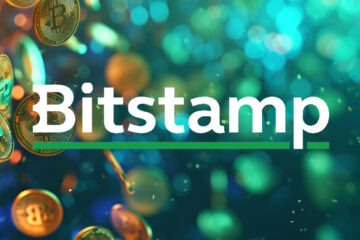
The following is a guest post by Alexander Mamasidikov, the CEO of CrossFi.
The world of financial transactions is transforming, driven by the rising solutions in Web3 payments. While this evolution is being witnessed worldwide, it’s particularly noteworthy that developing countries are spearheading this change.
This proactive approach reflects the agility and adaptability of these economies and positions them at the forefront of financial innovation. From revolutionizing decentralized money transfers to democratizing payment instruments, the rise of Web3 payments in the developing world heralds a seismic shift in how we perceive and engage with financial transactions.
As they navigate the uncharted waters of DeFi, these nations stand poised to outpace established economies like the United States, ushering in a new era of dynamic global economics.
The Shift in Money Transfers
Developing countries have long grappled with the challenges of expensive and inefficient economic systems in financial inclusion. Traditional methods often entail hefty transfer fees upwards of 10% or more, lengthy processing times on cross-border payments of up to 5 business days, and limited accessibility for the unbanked, who oftentimes do not have permanent addresses, government identification paperwork, or regular income.
All of this, of course, disproportionately affects underserved communities the most. Yet the emergence of Web3 technologies is reshaping this landscape, offering a lifeline to those previously excluded from the TradFi ecosystem.
One of the most significant impacts of daily-use Web3 payments in developing countries is revolutionizing how money transfers work on macro and micro scales. Whether it’s buying a meal, paying rent, or sending money across borders, this transformation not only streamlines the process of sending and receiving money but also reduces reliance on intermediaries, thereby mitigating any associated bank-related KYC standards and delays.
Encouragingly enough, including the ability to utilize crypto payments is good for business owners, as businesses that embraced cryptocurrency payments experienced an average return on investment (ROI) of 327% and witnessed a surge of up to 40% in new customer acquisition.
Across the globe, we witness compelling examples of successful Web3-based money transfer implementations in developing economies, such as Brazil. From P2P crypto swaps, to DeFi protocols facilitating cross-border transactions, these platforms offer unprecedented transparency and security, re-instilling trust in previously suspect financial systems.
Indeed, the shift towards Web3 payments holds immense promise for the developing world. By dismantling barriers to financial access and fostering greater financial inclusion, these innovations pave the way for economic empowerment and resilience. As developing countries embrace the transformative potential of Web3 payments, they not only bridge the gap with their developed counterparts but also emerge as trailblazers in the ongoing evolution of global finance.
Harnessing Web3 Payments for Inclusive Global Prosperity
The rapid adoption of Web3 payments in developing countries is propelled by a convergence of economic, regulatory, and grassroots factors, each contributing to the acceleration of this trend. At the same time, the implications of this adoption extend far beyond the borders of these nations, helping to reshape the trends of global economics and finance.
Adopting Web3 payments in developing countries is not merely a matter of convenience but a response to urgent economic and social imperatives. In nations plagued by hyperinflation, such as Venezuela and Argentina, where traditional currencies have faltered, cryptocurrencies offer a lifeline, providing a stable store of value and a hedge against economic volatility.
Similarly, concerns around financial freedom and government overreach are driving adoption in regions like Afghanistan, where the ability to freeze assets can have dire consequences, particularly for marginalized groups like women.
The regulatory environment in many developing countries is increasingly conducive to adopting Web3 technologies because there is such an acute need for alternative solutions.
Recently, South Africa’s FSCA clarified cryptocurrency regulations, sparking formalization efforts. Recognizing the potential benefits of crypto, members of the African Union in many regions continue to take proactive steps to create frameworks that support innovation and investment in the space.
By providing clarity and regulatory certainty, these initiatives encourage the development of a vibrant ecosystem of Web3 solutions, further fueling adoption and driving economic development.
Grassroots movements and entrepreneurial initiatives where people who are not crypto-native yet continue to adopt Web3 solutions play an increasingly crucial role in driving the adoption of Web3 payments worldwide. From community-driven projects to innovative startups, these initiatives demonstrate the bottom-up demand for alternative financial solutions that address the unique needs and challenges individuals and businesses face in developing countries.
Grassroots crypto adoption continues to surge in Lower Middle Income (LMI) countries, with their total adoption surpassing pre-bull market levels from Q3 2020.
It’s worth knowing that 40% of the world’s population lives in LMI countries, larger than any other single-income category. As these grassroots movements grow, they’re leading the charge into a new era of global Web3 adoption. Get ready because the revolution is just starting, and the whole world is starting to notice.
 Bitcoin
Bitcoin  Ethereum
Ethereum  Tether
Tether  XRP
XRP  USDC
USDC  Solana
Solana  TRON
TRON  Lido Staked Ether
Lido Staked Ether  Dogecoin
Dogecoin  Figure Heloc
Figure Heloc  Cardano
Cardano  WhiteBIT Coin
WhiteBIT Coin  Bitcoin Cash
Bitcoin Cash  Wrapped stETH
Wrapped stETH  Wrapped Bitcoin
Wrapped Bitcoin  USDS
USDS  Wrapped eETH
Wrapped eETH  Binance Bridged USDT (BNB Smart Chain)
Binance Bridged USDT (BNB Smart Chain)  Chainlink
Chainlink  Monero
Monero  LEO Token
LEO Token  WETH
WETH  Zcash
Zcash  Stellar
Stellar  Hyperliquid
Hyperliquid  Coinbase Wrapped BTC
Coinbase Wrapped BTC  Ethena USDe
Ethena USDe  Litecoin
Litecoin  Sui
Sui  Avalanche
Avalanche  Hedera
Hedera  sUSDS
sUSDS  Shiba Inu
Shiba Inu  USDT0
USDT0  Dai
Dai  Canton
Canton  Uniswap
Uniswap  PayPal USD
PayPal USD  Mantle
Mantle  Cronos
Cronos  Toncoin
Toncoin  World Liberty Financial
World Liberty Financial  Ethena Staked USDe
Ethena Staked USDe  Polkadot
Polkadot  USD1
USD1  Aave
Aave  Rain
Rain  Bitget Token
Bitget Token 


